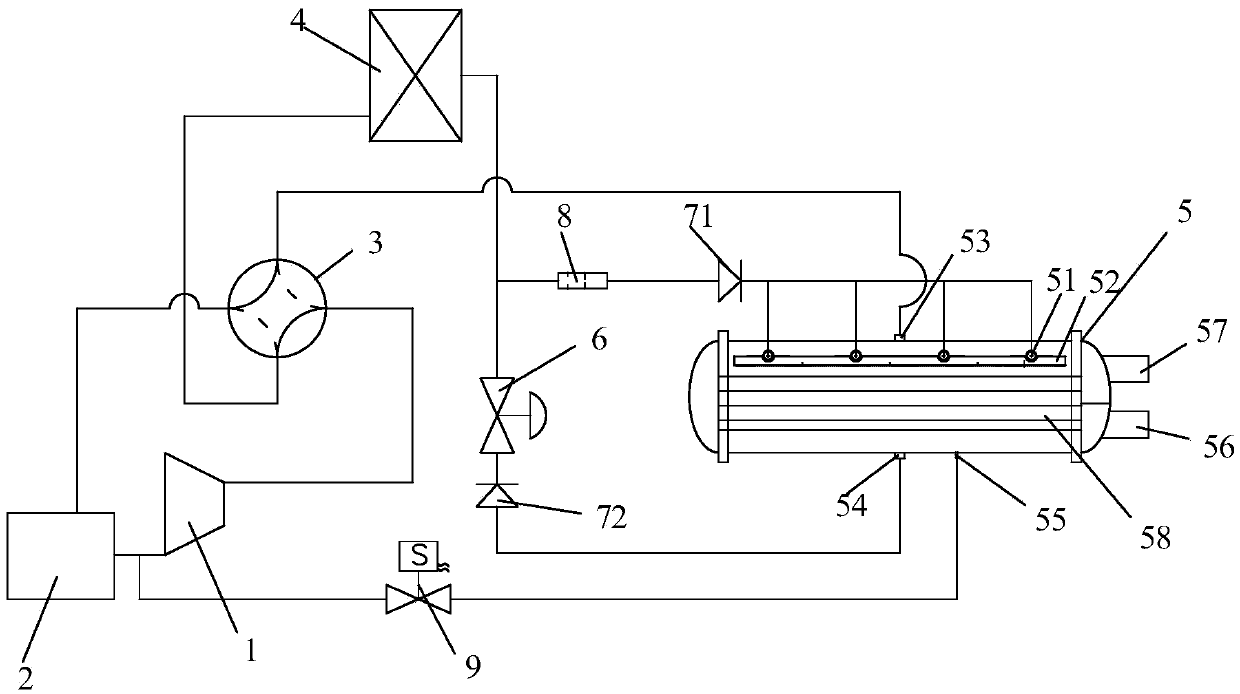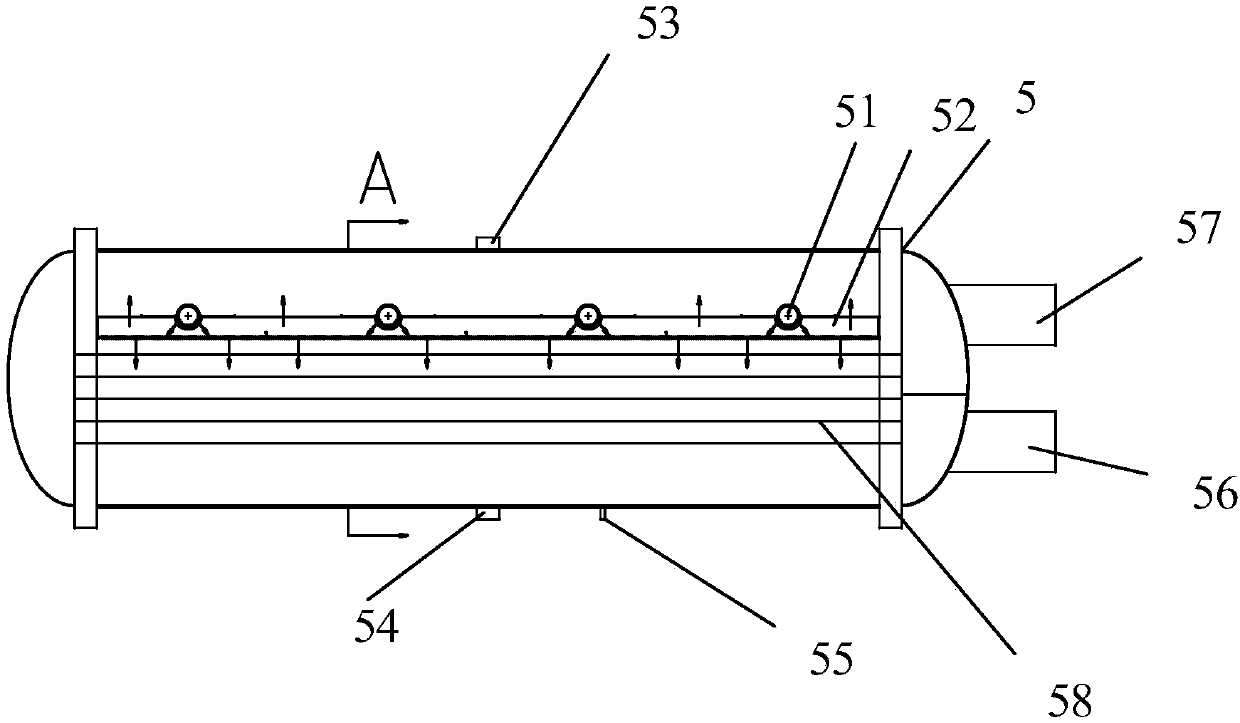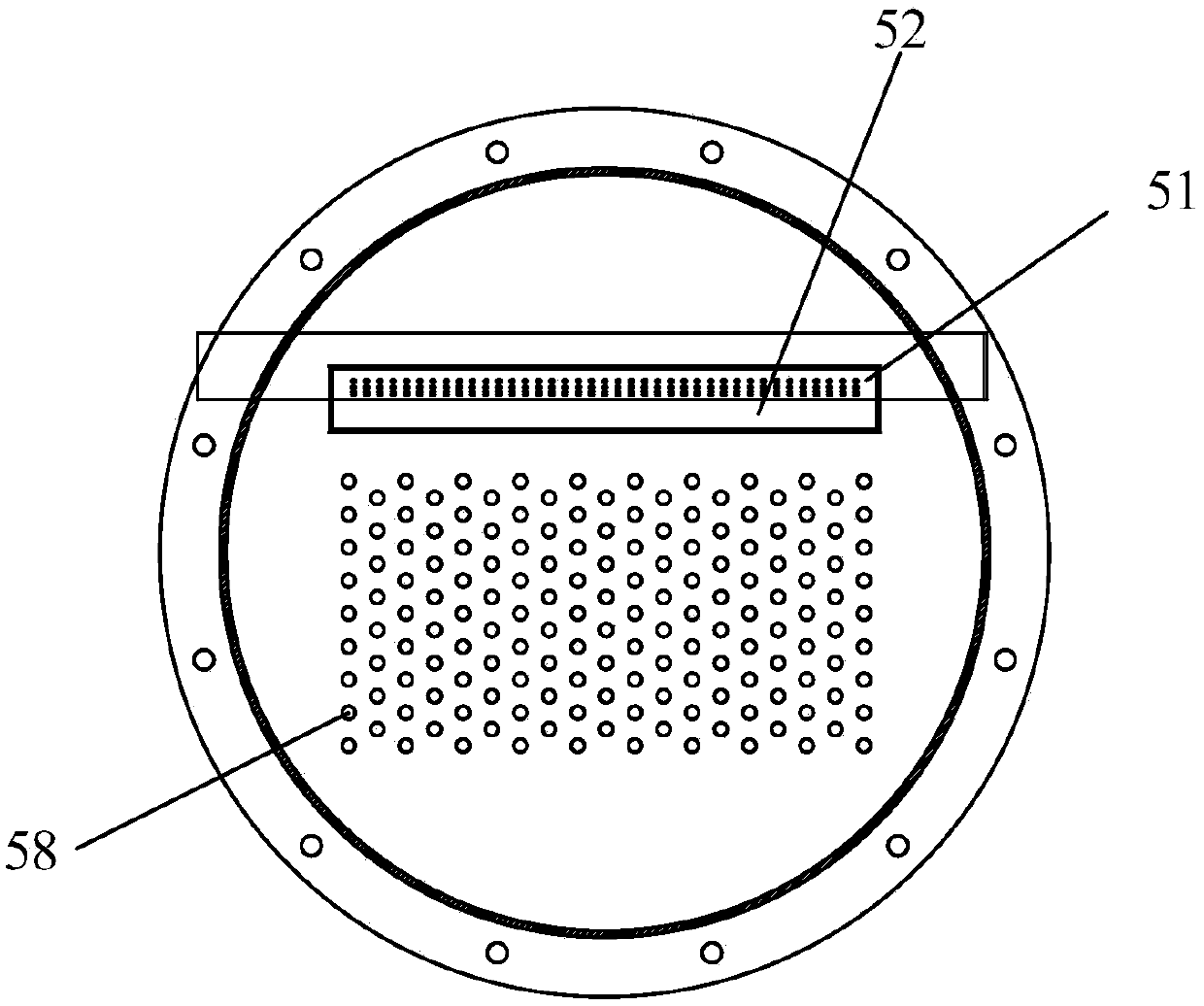Air source heat pump system
An air source heat pump, heat exchange tube technology, applied in lighting and heating equipment, compressors with reversible cycle, damage protection, etc., can solve the problems of liquid refrigerant backflow, poor suction pressure refrigeration efficiency, etc. , The effect of improving operating efficiency and high reliability
- Summary
- Abstract
- Description
- Claims
- Application Information
AI Technical Summary
Problems solved by technology
Method used
Image
Examples
Embodiment Construction
[0024] A preferred embodiment will be given below, and the present invention will be described more clearly and completely in conjunction with the accompanying drawings.
[0025] Such as Figure 1-Figure 3 As shown, the present invention includes an air source heat pump system, including a compressor 1, a finned heat exchanger 4, a shell-and-tube heat exchanger 5, and a gas-liquid separator 2 communicated with the compressor 1. It is characterized in that the shell-and-tube The heat exchanger 5 includes an air pipe 53, a liquid pipe 54, a heat exchange pipe 58, and a liquid separator. The air source heat pump system also includes a four-way valve 3, which is connected to the compressor 1, the gas-liquid separator 2, and the fins respectively. The fin heat exchanger 4 and the gas pipe 53 are connected, wherein,
[0026] Such as figure 1 As shown, the fin heat exchanger 4 communicates with the liquid separator through the orifice plate 8 and the first one-way valve 71; at the ...
PUM
 Login to View More
Login to View More Abstract
Description
Claims
Application Information
 Login to View More
Login to View More - R&D
- Intellectual Property
- Life Sciences
- Materials
- Tech Scout
- Unparalleled Data Quality
- Higher Quality Content
- 60% Fewer Hallucinations
Browse by: Latest US Patents, China's latest patents, Technical Efficacy Thesaurus, Application Domain, Technology Topic, Popular Technical Reports.
© 2025 PatSnap. All rights reserved.Legal|Privacy policy|Modern Slavery Act Transparency Statement|Sitemap|About US| Contact US: help@patsnap.com



